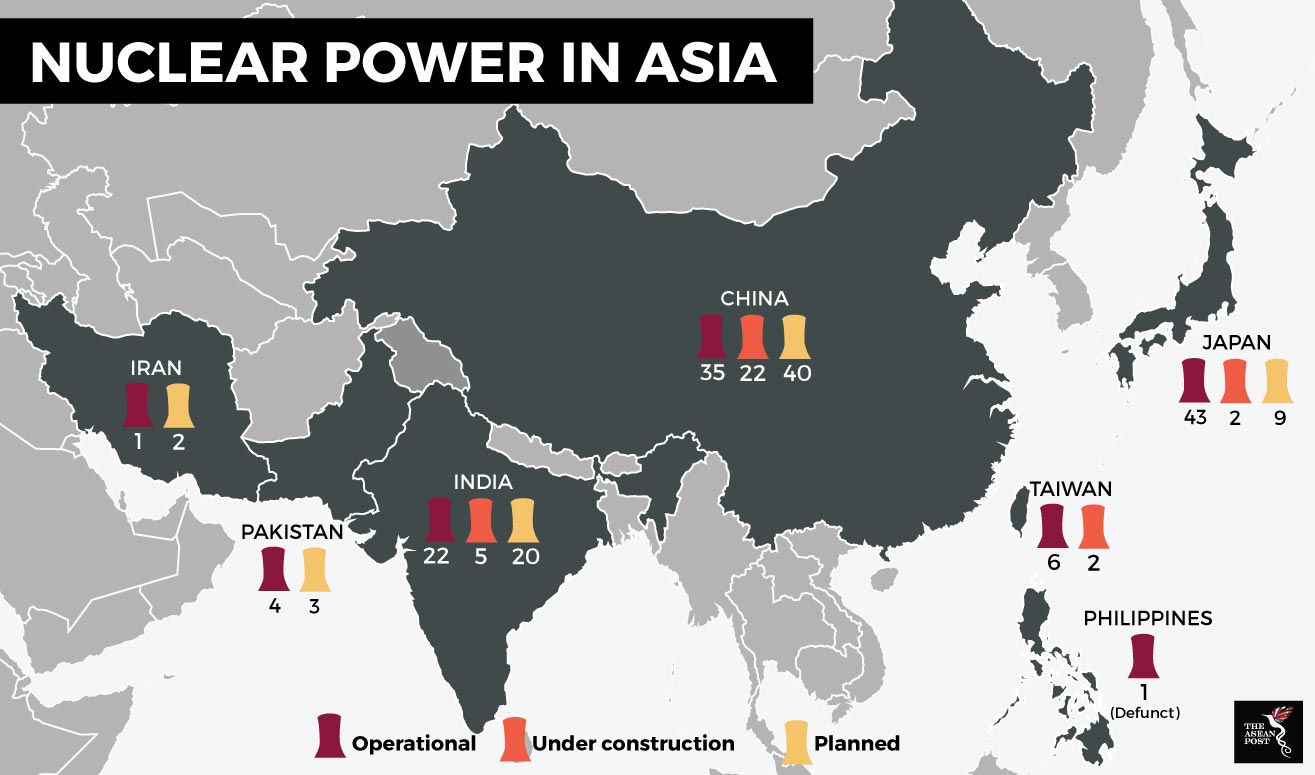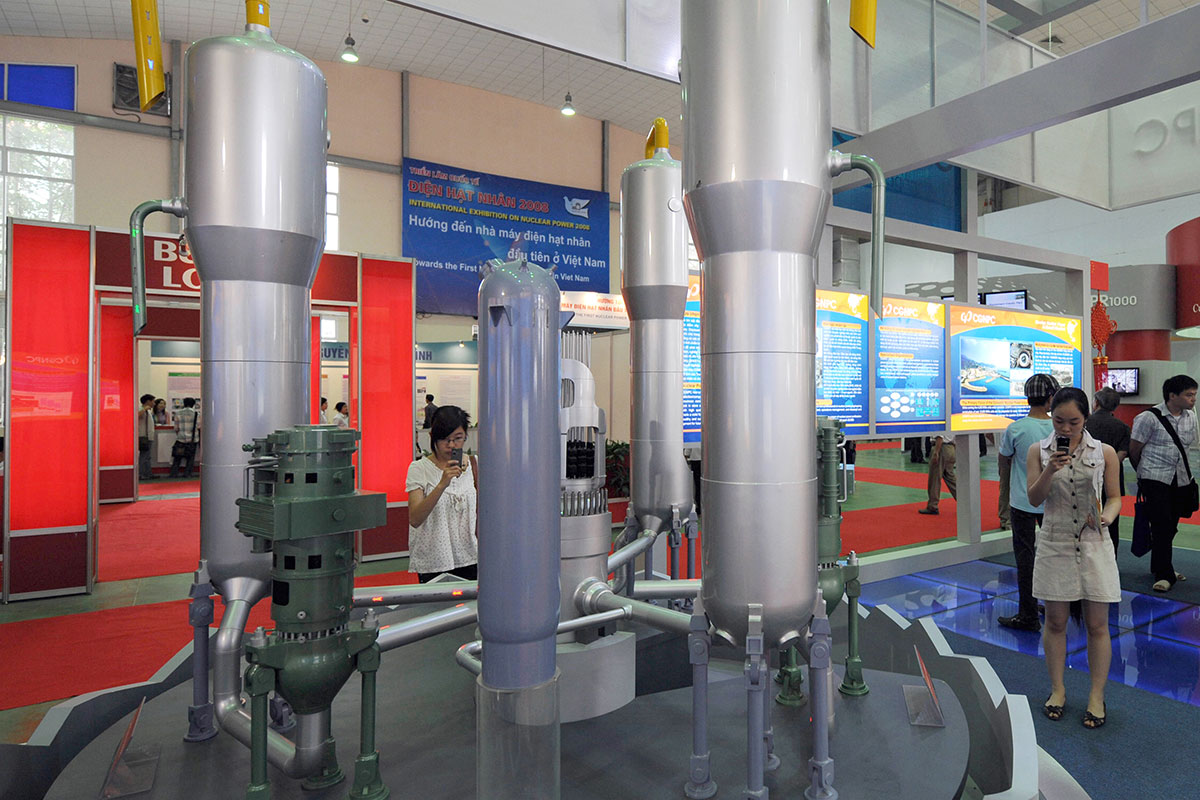In the past decade Asia has emerged as a booming market for nuclear energy. According to the World Nuclear Association, over half of the world’s nuclear plants under construction are in Asia. Most of them however are in China as they account for nearly 40 percent while the rest of Asia makes up 60 percent of nuclear plants under construction.
The increase in interest for nuclear energy on the continent is due to the strong economic growth enjoyed by most countries in the region as well as an ever-increasing demand for energy.
In Southeast Asia, several countries are beginning to flirt with the idea of nuclear energy as they begin to look at ways to meet growing energy demand. The International Energy Agency (IEA) highlighted in its Southeast Asia Energy Outlook 2017 report that, Southeast Asia’s energy demand would grow 60 percent by 2040.
In April, the ASEAN Center for Energy (ACE) published a “Pre-Feasibility Study on the Establishment of Nuclear Power Plant in ASEAN” with the support of the government of Canada under the Nuclear and Radiological Program Administrative Support (NRPAS) program. The report revealed that five ASEAN member states – Indonesia, Malaysia, Vietnam, Thailand and the Philippines – have been identified as frontrunners in the race to establish civilian nuclear power programs in the region. These five countries are considered frontrunners because they have advanced legal and regulatory frameworks, nuclear energy infrastructures and the required human resources and organisation in place.
Another startling fact highlighted by the report was that the region could have its first operational civilian nuclear power plant by 2030 and perhaps two more by 2035.
 Source: World Nuclear Association
Source: World Nuclear Association
Past developments
Recently, several countries outside Southeast Asia have shown interest in helping ASEAN member countries develop their own nuclear energy programs. Most recently, the Philippines was urged by Russia to consider the use of nuclear energy. This idea hasn’t been completely rejected by Philippines president, Rodrigo Duterte, who is looking for ways to fuel the country’s growing energy demand. According to reports, 20 experts from Russia’s State Atomic Energy Corporation or ROSATOM recently made a discreet visit to the defunct Bataan nuclear power plant located outside Manila. The experts reported that the Bataan plant can be made operational but would require repairs that can cost anywhere between US$3 billion to US$4 billion.
Built in 1982, plans to operate the Bataan power plant in the Philippines were abandoned after the overthrow of President Marcos and the Chernobyl disaster. Since then, it remains a site of curiosity for students and tourists.
Vietnam too could be looking at nuclear energy. Vietnamese President Tran Dai Quang and Indian Prime Minister Narendra Modi recently signed three Memorandums of Understanding (MoU), one of which included cooperation between the Global Centre for Nuclear Energy Partnership, India (GCNEP) and the Vietnam Atomic Energy Institute (VINATOM). Behind South Korea, Japan and China, India is one of the biggest consumers of nuclear power in Asia. Nuclear power is the fifth-largest source of electricity generation in India after coal, gas, hydropower and wind power.
Vietnam and the Philippines have both come very close to resorting to nuclear power in the past. In Vietnam’s case, the country has been planning on using nuclear power since 1995. In 2006, Vietnam announced that a 2,000 Megawatts electric (MWe) nuclear power plant would be built by 2020. Then in 2007, the government there announced that the energy target would be raised to 8,000 MWe and the deadline would be extended to 2025. In 2008, the government outlined that two reactors would be built in Phuoc Dinh and Vinh Hai. From then up until 2016, the Vietnamese government had concrete plans of building the power plant by making deals with Russia and Japan. However, in 2016 the government decided to abandon its plans for nuclear power, citing “…not economically viable because of other cheaper sources of power."
Aside from Vietnam and the Philippines, Cambodia and Thailand are also looking at nuclear energy. China has signed a Memorandum of Understanding (MoU) with both, Cambodia and Thailand on separate occasions to cooperate on nuclear power.
No concrete plans
Currently, there’s yet to be any concrete plans to build nuclear power plants in the region. However, these new developments show that there’s always a possibility in the future, as Southeast Asia’s energy demands keep growing.
Gaining public support for such projects could be difficult though. Nuclear energy might not produce any greenhouse gasses but nuclear accidents can cause irreversible long-term environmental damage as seen in the cases of Fukushima and Chernobyl. The former president of Vietnam, Truong Tan San admitted that the Fukushima disaster played a significant role in the government’s decision to abandon its nuclear energy program.
As energy demand in the region grows, ASEAN member states must find ways to address it. While countries such as India, China and Russia might be willing to assist the region with its nuclear energy development programs, ASEAN nations shouldn’t allow themselves to be pressured into complying with the geopolitical ambitions of these nuclear powers.
If Southeast Asia decides to go nuclear one day, it should chart its own nuclear plans. Perhaps before ASEAN countries explore the nuclear option, they should exhaust their renewable energy options first.
